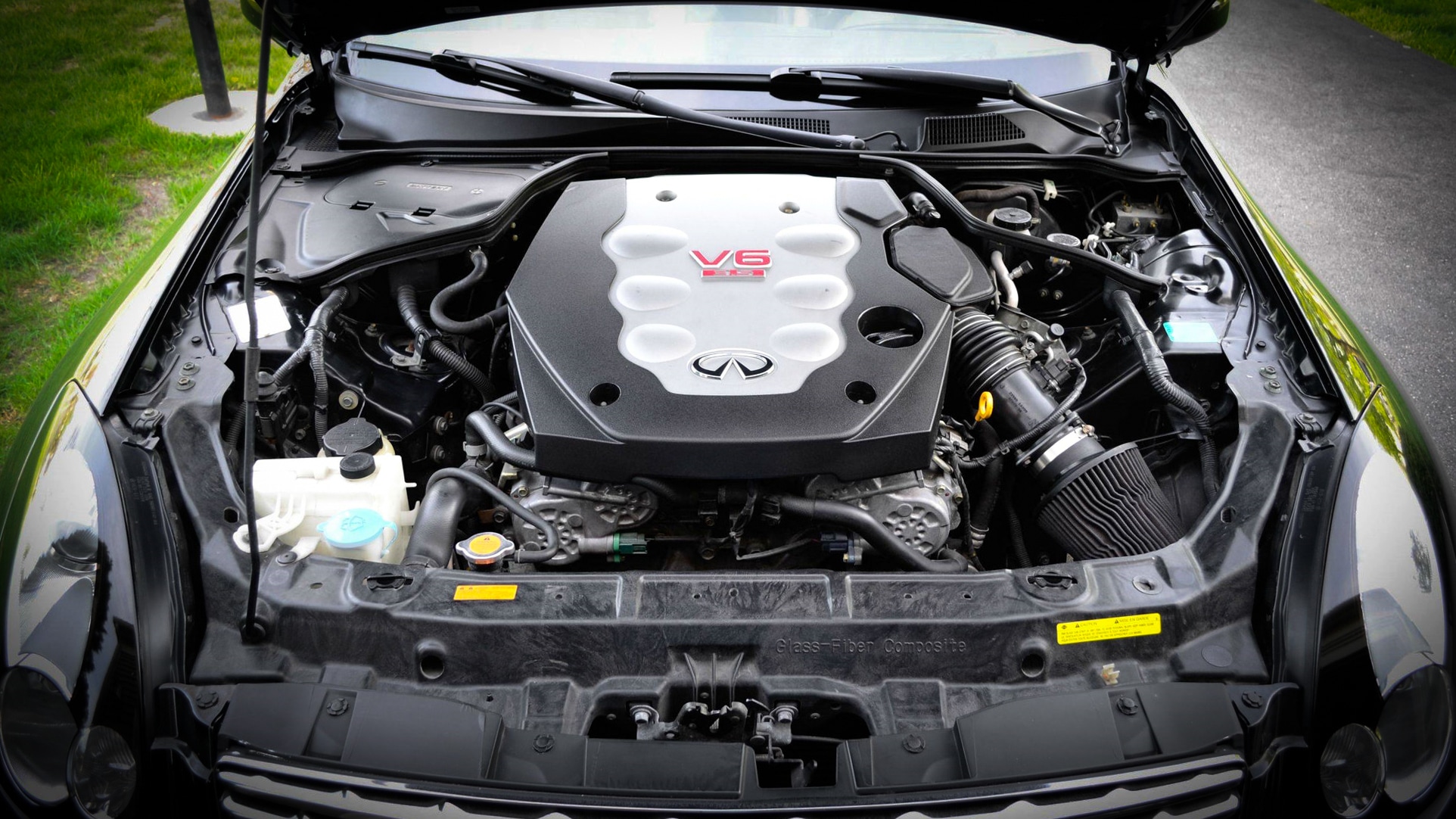When it comes to Nissan, engine reliability is a mixed bag. Some powerplants are practically immortal—clocking hundreds of thousands of miles without breaking a sweat—while others seem destined for an early grave, no matter how carefully you treat them.
Whether you’re a die-hard Nissan fan or just hunting for a dependable used ride, knowing which engines to trust (and which to avoid like a blown head gasket) can save you a world of headaches.
In this article, we’re breaking down five Nissan engines that have earned a reputation for longevity, and five that have left owners cursing the day they turned the key. Let’s get into the good, the bad, and the downright disappointing.
Nissan Engines That Rarely Die
This list dives into the Nissan engines that have proven themselves time and time again—reliable workhorses that just don’t know when to die. If you’re hunting for a bulletproof daily or planning a project car with staying power, these engines deserve your attention.
1. KA24DE – The Unkillable Workhorse
Found in: Nissan 240SX, Altima, Frontier, Xterra (1990s–2000s)
The KA24DE is a 2.4L inline-4 engine that gained a cult following not for its power but for its sheer resilience. It can endure poor maintenance, high mileage, and even amateur performance mods without giving up.
With a cast-iron block and simple construction, these engines regularly surpass 250,000 miles with nothing more than oil changes. It’s the kind of engine you’ll still find running in junkyards.
The Nissan KA24DE is a sturdy 2.4-liter inline-four engine that has gained recognition among car enthusiasts for its dependability and adaptability.
First appearing in the early 1990s, it was developed as part of Nissan’s engine lineup that aimed to strike a balance between solid performance and reasonable fuel consumption. This particular engine is a DOHC (Dual Overhead Cam) design, equipped with a 16-valve layout that allows for enhanced airflow and greater performance when compared to earlier models.
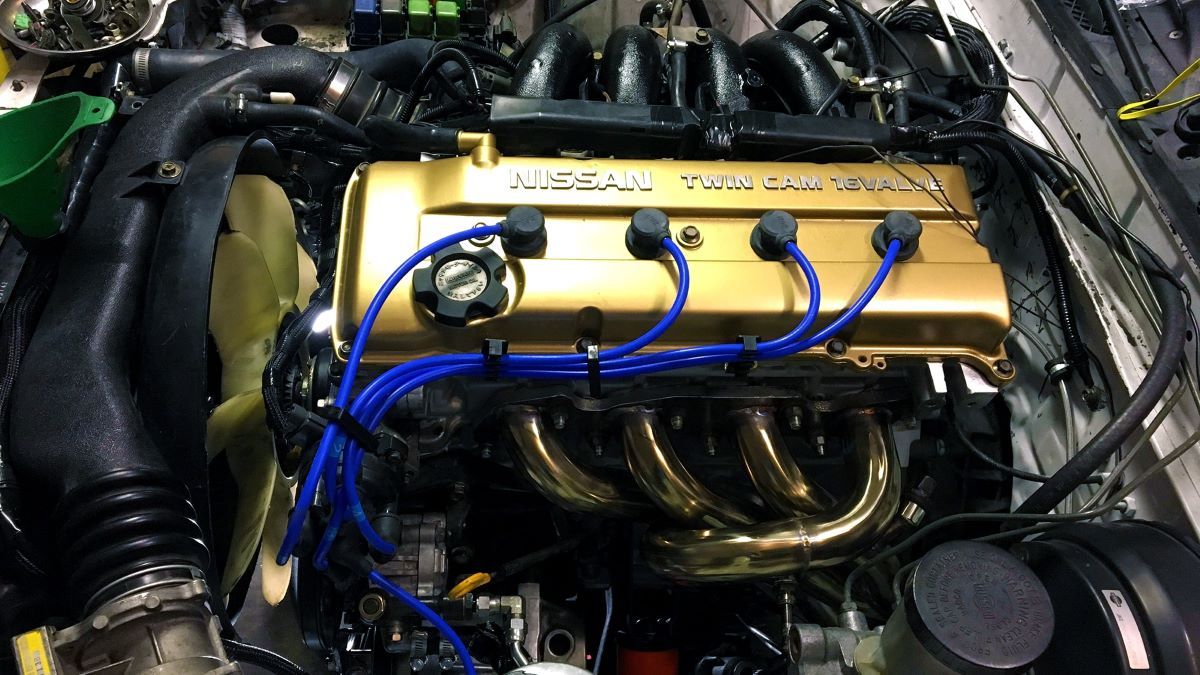
A key highlight of the KA24DE is its construction—a cast iron engine block paired with an aluminum DOHC cylinder head—which plays a major role in its strength and long-lasting performance.
Its tough build has made it a favorite in the tuning world, thanks to its capacity to handle a wide range of modifications. For those looking to boost power or increase torque, the KA24DE offers a dependable platform for performance upgrades.
From an engineering standpoint, the KA24DE is equipped with a multi-port fuel injection system, which ensures efficient fuel distribution, leading to better power delivery and improved fuel efficiency.
Sporting a compression ratio of approximately 9.5:1, it manages to walk the line between power and practicality, making it a solid option both for everyday driving and for drivers who enjoy pushing their car a bit harder on the weekends.
Also Read: Top 10 Most Reliable Used Cars You Can Buy for Under $10,000 in 2025
2. VQ35DE – The Reliable V6 Hero
Found in: Nissan Maxima, 350Z, Murano, Pathfinder, Altima (early 2000s–mid 2010s)
The VQ35DE is part of the award-winning VQ series and is one of Nissan’s best-known and most trusted engines. It offers a solid mix of performance and dependability.
Despite some oil consumption issues in higher-mileage versions, the engine is generally bulletproof if well-maintained. Many owners see 200,000–300,000 miles before even thinking about a rebuild.
The VQ35DE engine is a 3.5-liter V6 powerplant that has firmly established itself as a cornerstone in Nissan’s lineup since it first appeared in the late 1990s. Renowned for its well-balanced combination of performance and efficiency, this engine has gained popularity among both automotive enthusiasts and everyday drivers.
Its design features an all-aluminum construction, a Dual Overhead Camshaft (DOHC) configuration, and a 60-degree V-angle—all of which contribute to a smooth, responsive, and refined driving experience across a wide range of vehicles.
One of the VQ35DE’s most notable strengths is its ability to produce impressive power and torque. In most applications, the engine delivers around 280 horsepower and 270 lb-ft of torque, offering strong acceleration and confident performance whether you’re merging onto a highway or enjoying a spirited backroad drive.
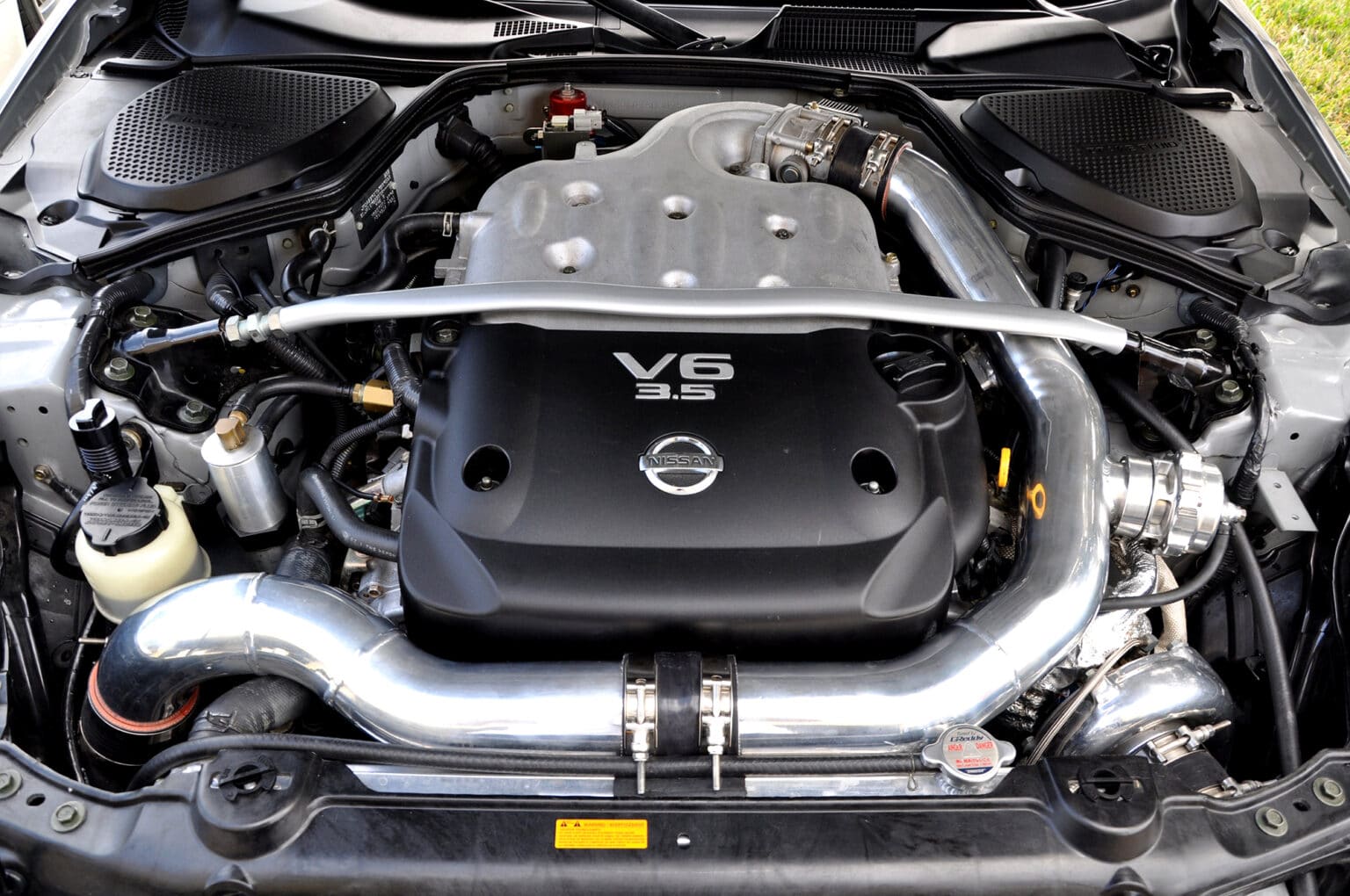
A key component of its performance is Nissan’s Variable Timing Control (VTC) system, which adjusts valve timing to optimize power delivery and fuel efficiency across various engine speeds. This makes the VQ35DE not just powerful, but also adaptable to different driving conditions.
Throughout its production run, the VQ35DE has been utilized in a wide variety of Nissan and Infiniti models, highlighting its versatility and performance capabilities.
In the 350Z, for example, the VQ35DE is tuned to deliver a high-revving, performance-focused driving experience. In contrast, in models like the Pathfinder or Murano, it’s configured to strike a practical balance between usable power and fuel efficiency, making it a solid choice for daily driving and family-oriented utility.
Maintenance is another area where the VQ35DE shines. It has developed a reputation for being relatively easy to service, thanks in part to its accessible design.
Many owners and mechanics appreciate how straightforward it is to work on, especially for an engine that delivers such strong performance. This, combined with its proven reliability, has contributed to the VQ35DE’s longevity and enduring popularity within Nissan’s engine lineup.
In summary, the VQ35DE is a well-rounded and dependable V6 engine that has made a lasting impact on Nissan’s automotive history. Its blend of power, efficiency, and durability makes it a standout choice for a broad spectrum of drivers and vehicles, and it continues to be recognized as one of the more respected and reliable engines in the segment.
When looking at the VQ35DE’s specifications in more detail, the engine is built around a 60-degree V6 configuration with a total displacement of 3.5 liters (3498 cc).
It operates at a compression ratio of 10.3:1, which helps it achieve its strong horsepower and torque numbers—typically between 275 to 300 horsepower and 251 to 270 lb-ft of torque, depending on the model it’s used in.
The engine uses a Multi-Point Fuel Injection (MPFI) system for precise fuel delivery, and its valvetrain consists of a DOHC setup with Variable Timing Control (VTC) to enhance performance at different RPM ranges.
Ignition is handled by a distributor-less ignition system (DLI), and the engine runs on regular unleaded gasoline, with 87 octane being the minimum recommended. In terms of engine speed, the VQ35DE typically idles between 600 and 800 RPM, with a redline at around 6,500 RPM.
3. SR20DE/DET – The JDM Favorite
Found in: Nissan Sentra SE-R, Silvia, Pulsar GTI-R (1990s)
This high-revving 2.0L engine is widely respected in both naturally aspirated and turbocharged forms. Built for performance, it’s also surprisingly durable.
Enthusiasts love the SR20 for its stout internals, closed-deck design, and ability to handle abuse. Properly tuned, turbo variants can handle 300+ horsepower with stock internals and last for years.
The SR20 series engines were manufactured at Nissan’s Yokohama facility from 1989 until 2007. Over the years, they became some of the most popular and widely used engines in Nissan’s lineup, thanks to their strong reputation for reliability, impressive performance, and significant tuning potential.
These engines were installed across a variety of Nissan models, ranging from practical vehicles like the Nissan Almera, Primera, and X-Trail GT, to performance-oriented platforms such as the Nissan 180SX and Silvia, among others.
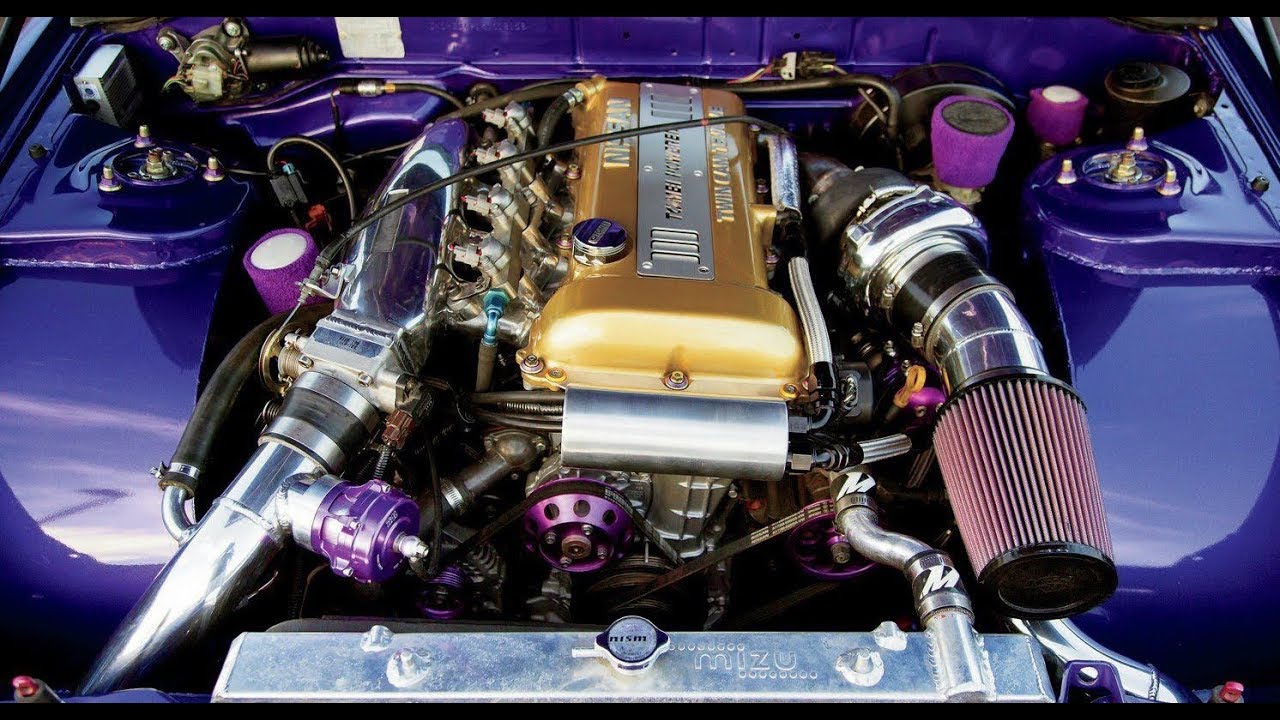
The SR20DE and SR20DET engines feature a four-cylinder, in-line configuration and are constructed with an aluminum cylinder block, which helps reduce weight while improving heat dissipation.
Each cylinder includes four valves, promoting better airflow and engine efficiency. Both the piston stroke and the cylinder bore measure 86 mm. Depending on the version of the engine, compression ratios range from 8.3 to 11.0, allowing for flexibility between naturally aspirated and turbocharged setups.
With a total displacement of 1998 cubic centimeters, the SR20 delivers a wide range of power and torque outputs depending on the specific variant. Power levels span from 115 horsepower at 6,000 rpm to 280 horsepower at 6,400 rpm, while torque ranges from 166 Nm at 4,800 rpm to 315 Nm at 3,200 rpm.
These performance characteristics provide excellent driving dynamics, making the engine well-suited for both urban commuter vehicles and high-performance sports cars.
In terms of fuel efficiency, data from the Infiniti G20, which was equipped with the SR20, shows average fuel consumption rates of 11.5 liters per 100 kilometers in city driving, 6.8 liters per 100 kilometers on the highway, and 8.7 liters per 100 kilometers under mixed driving conditions.
Oil consumption can reach up to 500 grams per 1,000 kilometers, which is typical for performance-oriented or heavily loaded engines. The engine holds 3.4 liters of oil, and while Nissan recommends an oil change every 15,000 kilometers, many owners opt to change it every 7,500 kilometers to maximize engine longevity and reliability.
The SR20 series engines operate at an average temperature of around 90 degrees Celsius. Although Nissan never provided a specific lifespan for these engines, real-world results have shown that, with proper care and regular maintenance, the SR20 can surpass 400,000 kilometers of service life.
One of the SR20’s most appealing qualities is its tuning potential. Both the SR20DE and the turbocharged SR20DET can be upgraded significantly, with some builds reaching 400 horsepower or more without sacrificing engine longevity.
This tunability, combined with its proven track record, has made the SR20 a fan favorite among car enthusiasts and tuners who want both reliability and high-performance capability in a single package.
Also Read: Top 10 Most Reliable Used Cars You Can Buy for Under $10,000 in 2025
4. QR25DE (Revised Versions) – Comeback Story
Found in: Nissan Altima, Rogue, Sentra (2010s–present)
The early QR25DE engines had issues (more on that later), but Nissan corrected many of them by the early 2010s.
The revised version features better pistons, improved balance shafts, and updated ECU tuning.
These changes transformed the engine into a reliable daily driver that can easily go 200,000+ miles with proper care. It’s a good example of a troubled engine design that was redeemed.
The QR25DE is a 2.5-liter inline-four engine developed by Nissan that has earned a solid reputation for striking an effective balance between performance and efficiency. First introduced in the early 2000s, the engine quickly found its place as a core component in a broad array of Nissan and Infiniti vehicles.
Engineered with durability and reliability in mind, the QR25DE is constructed with an aluminum alloy block and aluminum DOHC (dual overhead cam) cylinder heads. This combination not only reduces the overall weight of the engine but also contributes to better thermal efficiency, allowing it to operate smoothly under various conditions.
With its DOHC configuration, the engine houses 16 valves, which improve airflow through the combustion chambers and enhance overall combustion efficiency. It also features an electronic fuel injection system that precisely manages fuel delivery, resulting in optimized performance and reduced emissions.
The engine operates with a compression ratio of 9.6:1, providing a thoughtful balance between power and fuel economy. This makes the QR25DE a strong performer whether it’s being used for everyday commuting or more spirited driving situations.
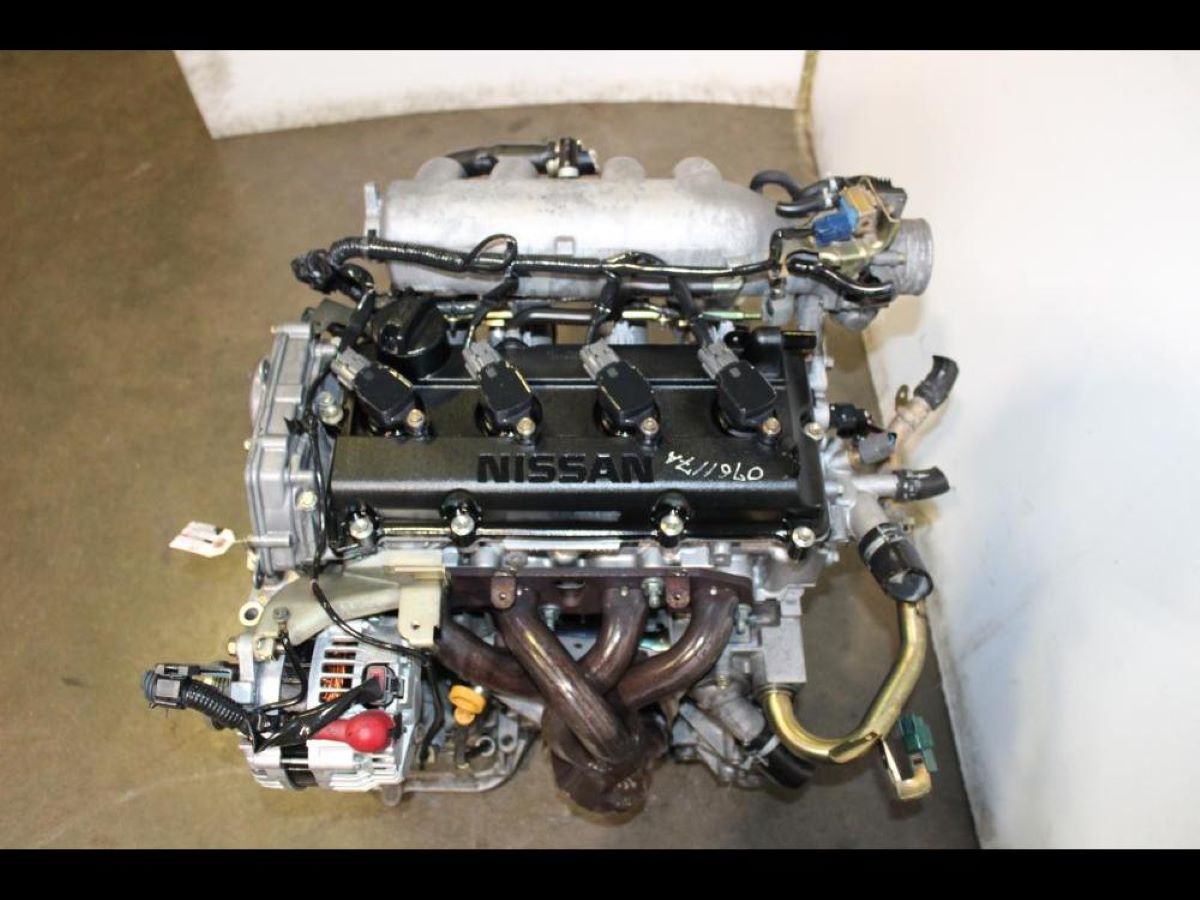
One of the most noteworthy attributes of the QR25DE is its versatility. It has been installed in a wide variety of Nissan models, including sedans and SUVs, which speaks to its adaptability across different vehicle types and driving styles.
Depending on the specific application and tuning, the engine’s power output ranges from 150 to 175 horsepower, delivering solid and dependable performance without venturing into overly aggressive territory.
This makes it especially appealing for drivers seeking an engine that’s both reliable and practical—capable of handling daily use with ease while also being up for weekend getaways or long-distance travel.
5. VG30E – The Reliable 3.0L V6
Found in: Nissan Pathfinder, 300ZX, Maxima (1980s–1990s)
The VG30E is an old-school V6 known for its overengineering and longevity. It’s not particularly powerful by modern standards, but it’s extremely durable.
With cast-iron construction and conservative tuning, these engines often run well past 250,000 miles with minimal issues. Many early Pathfinders and Z-cars are still running strong thanks to this rock-solid V6.
The VG30E engine is a 3.0-liter V6 powerplant that firmly established its place in the automotive world, particularly throughout the 1980s and 1990s. Recognized for its solid construction and consistent performance, the VG30E belonged to Nissan’s VG
engine family, a lineup celebrated for its forward-thinking engineering and broad applicability across multiple vehicle types.

This engine was developed with a clear focus on blending power and efficiency, making it a go-to option for a wide range of Nissan models during its production years.
A defining trait of the VG30E is its SOHC (Single Overhead Cam) layout, which promotes smoother engine operation and enhances overall reliability. The engine features a bore of 86 mm and a stroke of 78 mm, dimensions that help it deliver a well-balanced performance profile.
This design strikes a smart equilibrium between output and economy, ensuring the VG30E doesn’t just perform well but does so with admirable efficiency. The engine has earned a reputation for its smooth power delivery, making it a strong fit for everything from daily commuting to more spirited driving scenarios.
Nissan Engines That Always Die
In this section, we’re digging into the Nissan engines that consistently let owners down—the ones that always die before their time. If you’re shopping for a used Nissan or thinking about a project car, these are the motors you’ll want to approach with serious caution.
1. QR25DE (Early Versions) – A History of Self-Destruction
Found in: Nissan Altima, Sentra SE-R Spec V (2002–2006)
The early 2.5L QR25DE engines were notorious for several fatal flaws: piston ring issues, high oil consumption, and fragile catalytic converters.
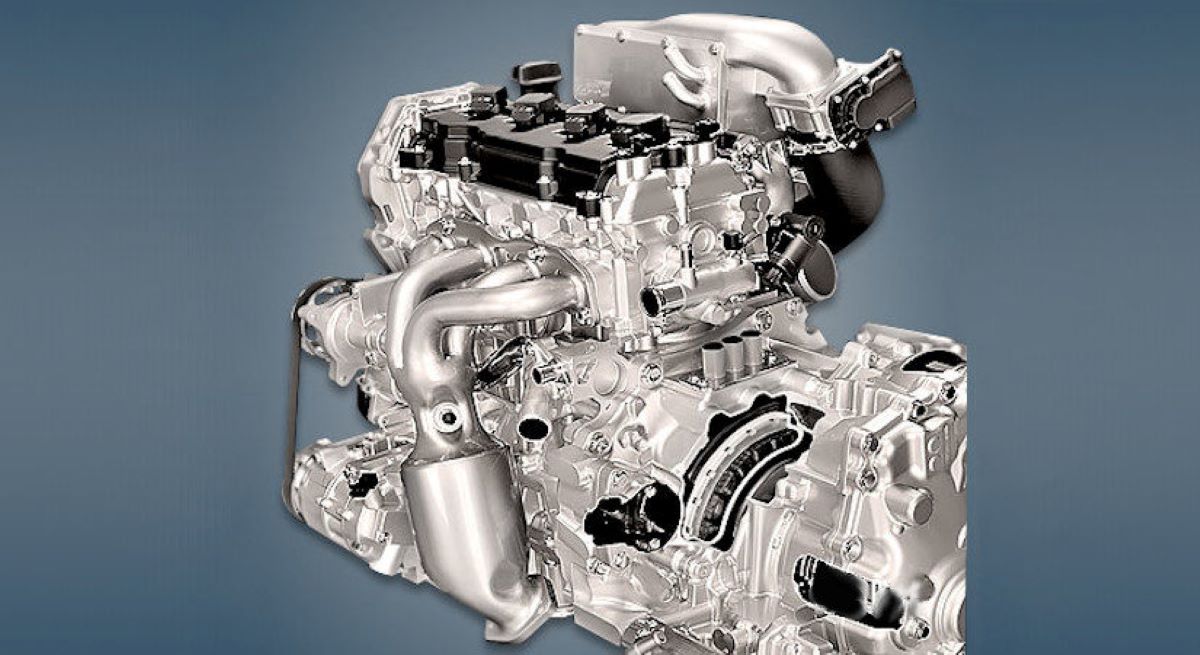
The worst part? Disintegrating cats would get sucked back into the engine via the EGR system, causing internal damage. Many of these engines barely made it past 100,000 miles without major problems or complete failure.
When it comes to longevity, performance, and mainstream appeal, it’s impossible to overlook the engine that powered the iconic Nissan SE-R.
These cars still make their presence known on the road, easily recognized by their distinctive sound, sporty appearance, and the unmistakable character they lend to their drivers. The engine at the heart of this experience is none other than the QR25DE, a powerplant that continues to see use even today.
In this discussion, we’ll take a closer look at the QR25DE engine’s design, its range of applications, versions, and modifications, as well as delve into its common issues, overall reliability, tuning capabilities, aftermarket support, and much more.
The Nissan QR25DE is a 2.5-liter, inline-four gasoline engine that Nissan began producing in 2001, and it remains in production to this day. While it shares a core architecture with the QR20DE, it incorporates several significant upgrades that set it apart.
This engine is equipped with a new crankshaft, along with an aluminum cylinder head and block. It features dual overhead camshafts, a four-valve-per-cylinder configuration, and continuously variable valve timing (CVTC) on the intake camshaft.
Additionally, it uses an electronic throttle, individual ignition coils, and a multi-point fuel injection system. For durability and precision, the QR25DE is built with a steel timing chain, steel connecting rods, an aluminum intake manifold, and counter-rotating balance shafts to improve smoothness.
These characteristics defined the early-generation QR25DE engines, but in 2007, Nissan introduced an updated version that implemented further technological improvements—details of which we’ll explore later in this article.
The QR25DE is part of Nissan’s QR family of inline-four engines and was designed as the successor to the KA24DE, aiming to provide improved efficiency, emissions compliance, and modern drivability without sacrificing too much of the rugged character that made its predecessor so popular.
2. MR20DE – Weak Under Stress
Found in: Nissan Sentra, Rogue, Cube (2007–2014)
The MR20DE is a 2.0L engine designed for economy and lightweight packaging. Unfortunately, it suffers from premature timing chain wear, oil burning, and coil pack failures.
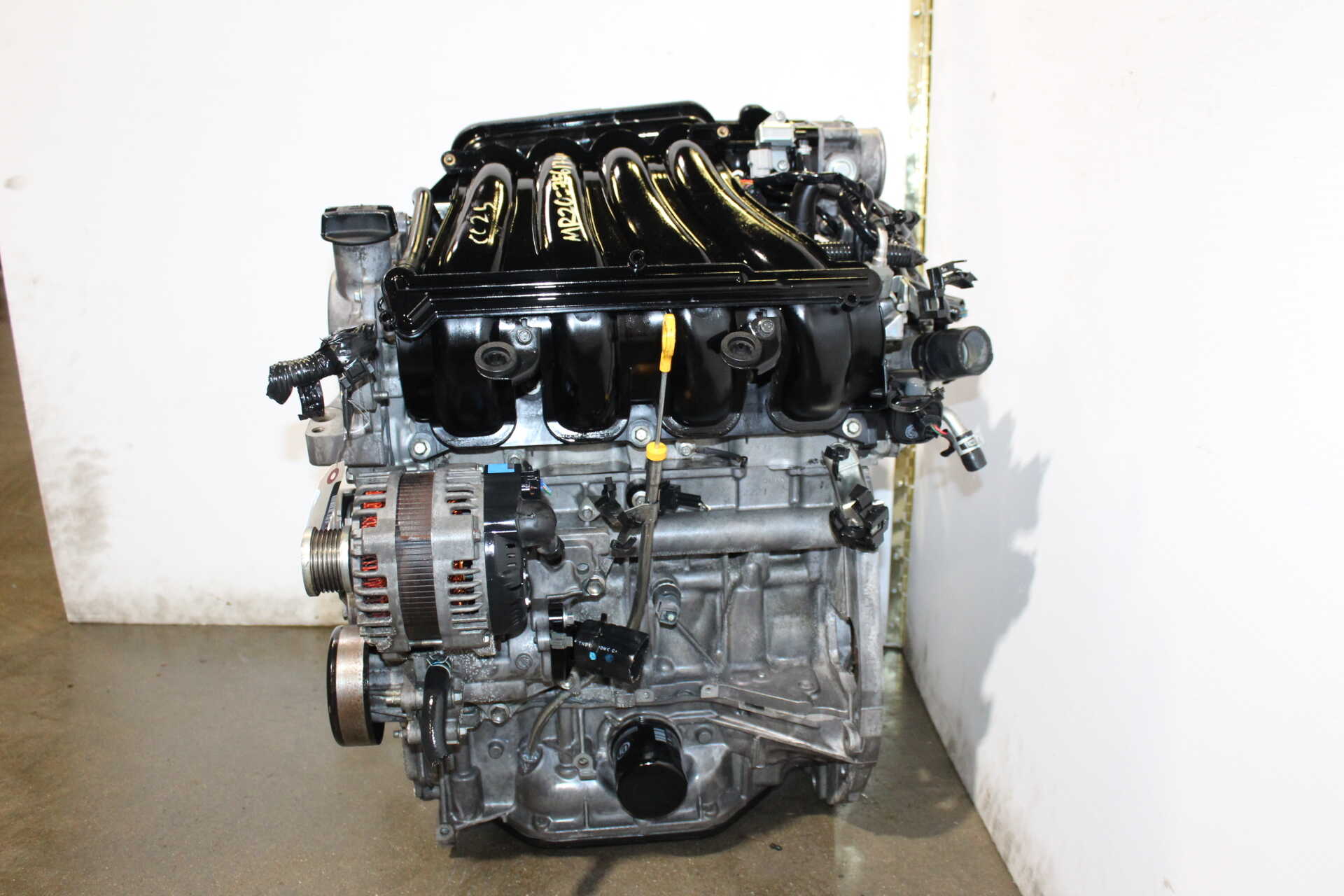
It also doesn’t handle heat well. In many cases, poor engine cooling and oil flow management led to warped heads or blown head gaskets by 120,000 miles especially in hot climates.
The Nissan MR20DE is a 2.0-liter inline-four engine that has been part of Nissan’s lineup since the mid-2000s. This engine has seen widespread use in several Nissan models, including the Sentra, Rogue, and Altima.
Engineered with an emphasis on fuel efficiency and balanced performance, the MR20DE incorporates a DOHC (Dual Overhead Cam) layout and employs a variable valve timing system known as CVTC (Continuously Variable Timing Control). This system is designed to enhance both power delivery and fuel economy by adjusting valve timing based on driving conditions.
Since its debut, the MR20DE has played a key role in Nissan’s powertrain lineup, reflecting the broader automotive trend toward downsized, efficient engines.
As stricter global emissions standards took hold, automakers needed to produce engines that could maintain performance while reducing environmental impact. The MR20DE was Nissan’s response to these evolving demands, utilizing modern engineering and focusing on durability and compliance.
However, while the MR20DE began with strong potential and met early expectations, it hasn’t been free from problems. Over time, a number of issues have emerged, affecting the engine’s long-term reputation. These recurring problems have led to growing concerns among owners and car enthusiasts, raising questions about its overall reliability and long-term performance.
3. RD28 Diesel – Overheating Specialist
Found in: Nissan Patrol (non-turbo diesel variants, 1980s–1990s)
The RD28 non-turbo diesel engine was infamous in the Patrol community for chronic overheating issues. It had a fragile head design, prone to cracking when the cooling system wasn’t meticulously maintained.
Once cracked, the cylinder head would cause poor compression, coolant loss, and white smoke. Many owners swapped them out early rather than deal with the headache.
The 2.8-liter diesel engine, widely recognized as the RD28, is a rugged and dependable powerplant developed by Nissan’s engineering team in the late 1980s. This inline-six engine stands as a clear example of Nissan’s dedication to building reliable and fuel-efficient diesel engines, particularly suited for their trucks and SUVs.
With a solid reputation for durability and respectable torque output, the RD28 quickly gained traction among buyers seeking a reliable workhorse capable of performing well in both on-road and off-road environments.
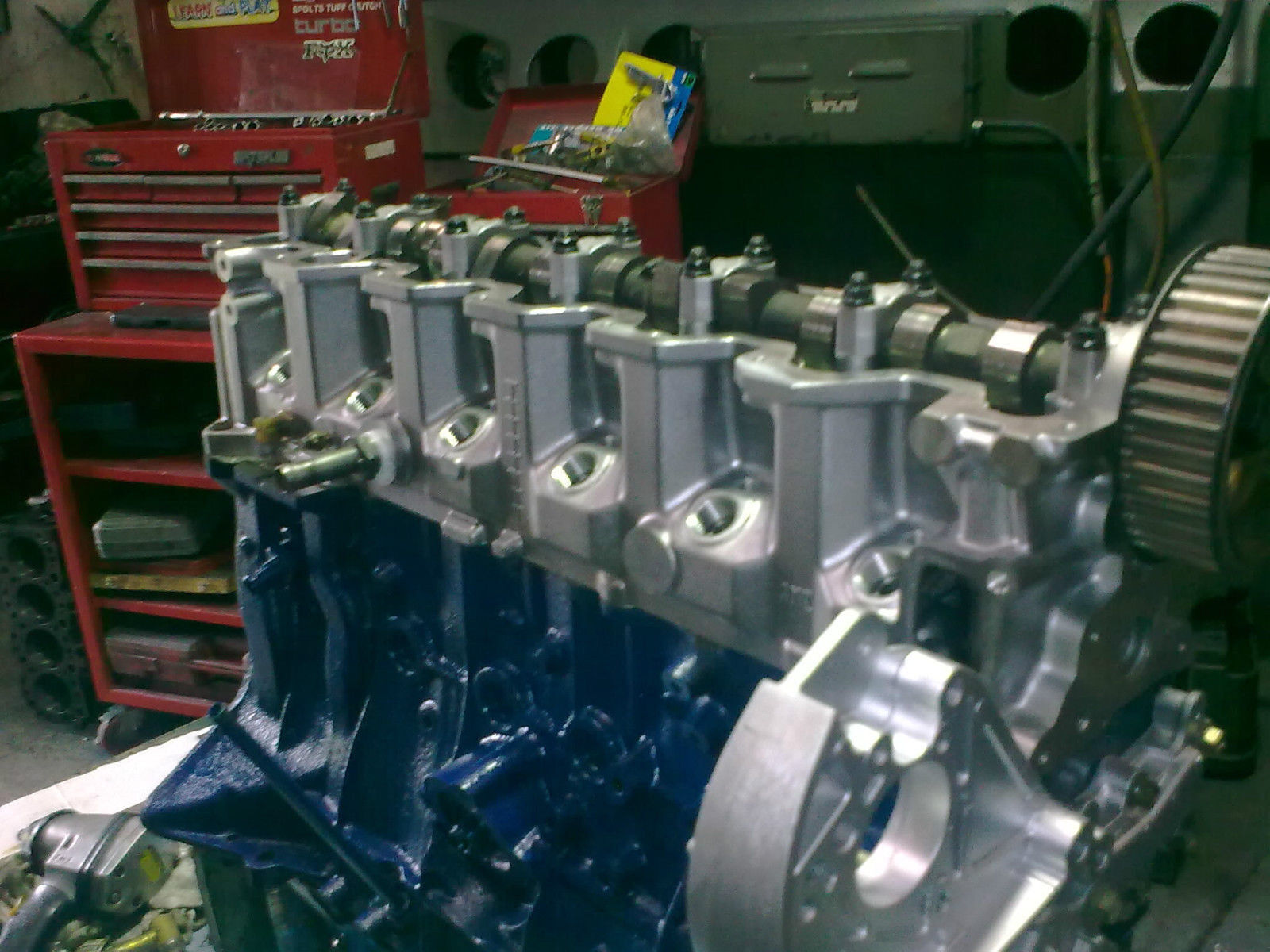
One of the standout qualities of the RD28 engine is its straightforward design and ease of maintenance, attributes that have made it especially popular with DIY mechanics and professional technicians. Built with a cast-iron block and an aluminum cylinder head, the engine benefits from excellent strength and long-term durability.
It is equipped with a direct fuel injection system, which helps to improve fuel economy while keeping emissions relatively low—a feature that aligns well with growing environmental concerns in the automotive world.
Depending on the specific version and tuning, the RD28 is capable of producing around 120 to 140 horsepower, with torque outputs reaching up to 200 Nm, delivering the kind of pulling power that makes it suitable for heavy-duty use.
4. VQ35HR (Early Versions) – The Oil Burner
Found in: Nissan 350Z, Infiniti G35 (2007–2008)
The high-revving “HR” version of the VQ35 was supposed to be an upgrade but early production models were plagued with severe oil consumption issues.
Faulty piston rings and aggressive PCV systems meant some engines burned a quart every 1,000 miles or less. When owners didn’t keep up with frequent top-offs, the result was often catastrophic engine failure well under 100,000 miles.
The VQ35HR is a 3.5-liter V6 engine engineered by Nissan, widely recognized for its strong performance and adaptability across different platforms.
As a member of the VQ engine family, the VQ35HR continues the legacy of reliability and efficiency that this lineup has come to be known for. Introduced in the mid-2000s, this engine quickly gained popularity in a variety of Nissan and Infiniti models, establishing itself as a go-to choice for drivers seeking a blend of power and refinement.
What distinguishes the VQ35HR from earlier iterations is the range of advanced design improvements it incorporates. This engine is built with a high-revving configuration, enabling it to deliver impressive power and torque throughout the RPM range.
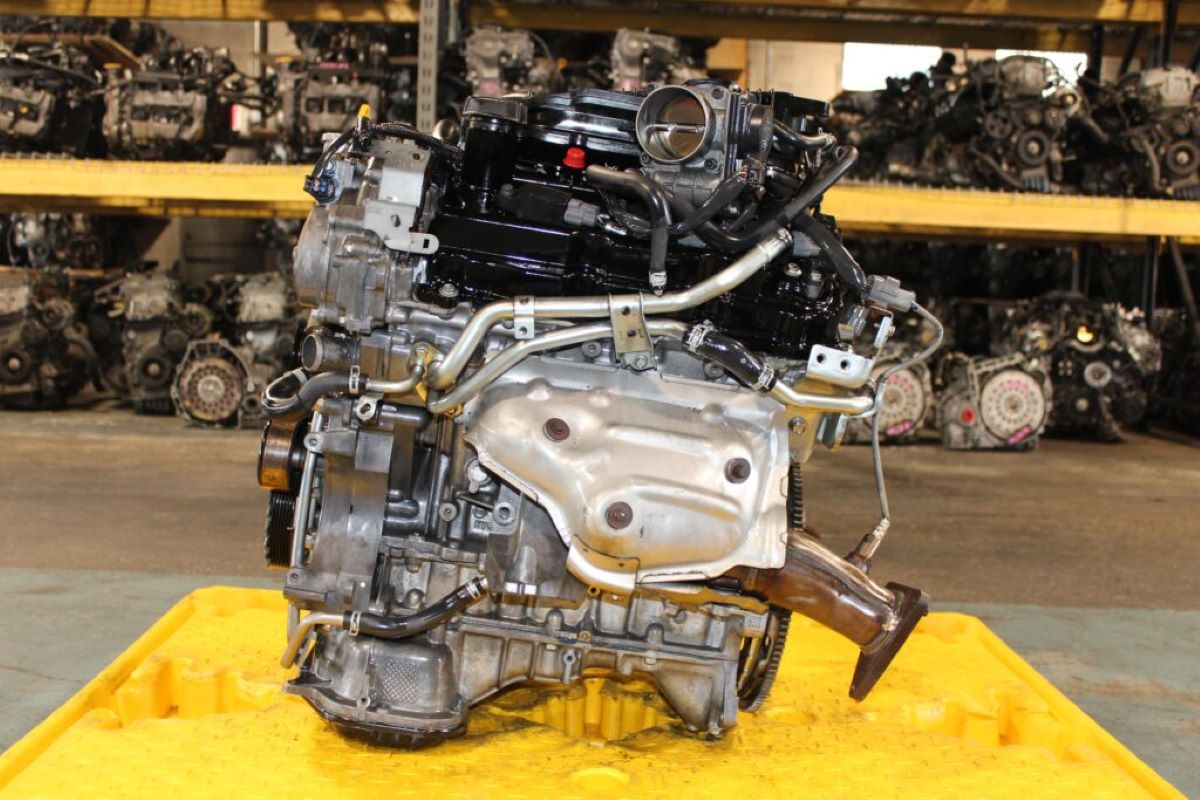
It includes Dual Overhead Camshafts (DOHC) along with VVEL (Variable Valve Event and Lift)—Nissan’s variable valve timing system—which fine-tunes both performance and fuel economy. Thanks to these technologies, drivers benefit from precise throttle response and a dynamic driving experience, whether maneuvering through traffic or enjoying a stretch of open highway.
Structurally, the VQ35HR features an aluminum alloy block paired with aluminum DOHC cylinder heads, which together result in a lightweight yet durable design. This approach contributes not only to enhanced performance but also supports better fuel efficiency, making the engine an attractive option for those who don’t want to sacrifice either power or practicality.
5. KA20DE – The Forgotten Four-Cylinder
Found in: Nissan Frontier, Xterra (early 2000s)
The KA20DE was meant to be a smaller sibling to the KA24DE, but it never lived up to the same reputation. It lacked torque, suffered from overheating under load, and didn’t respond well to poor maintenance.
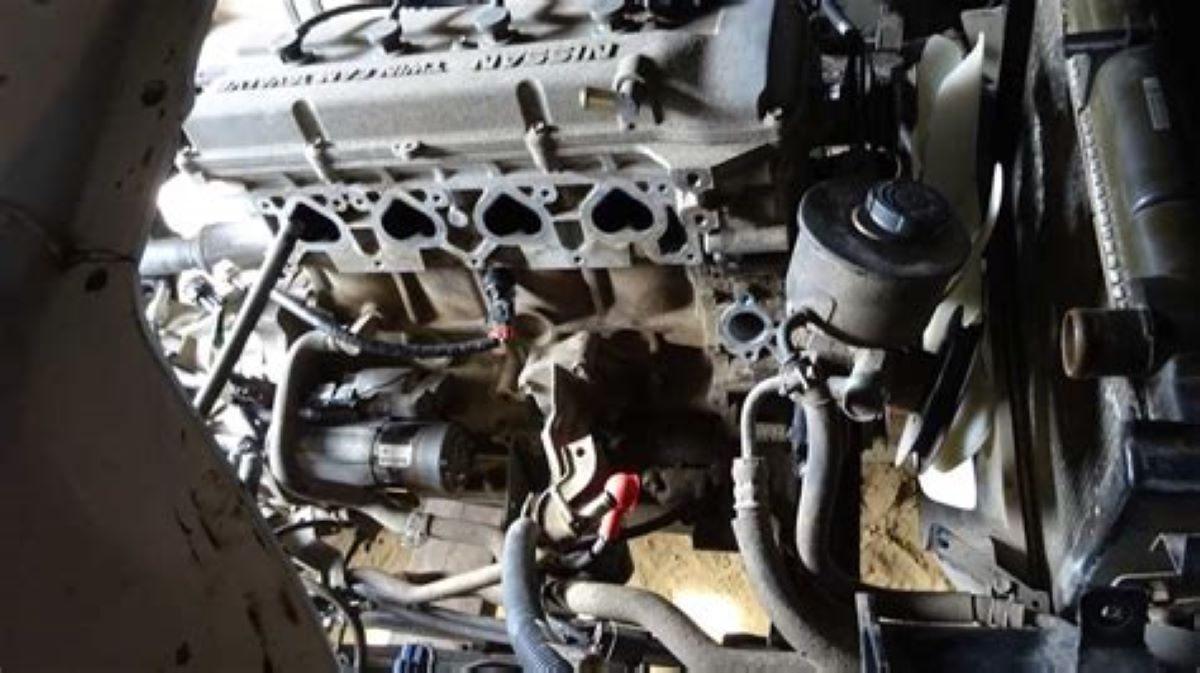
Its thin head gasket design was a weak point, leading to frequent failures in hot or heavy-duty environments. Most of these engines were swapped out or junked well before 150,000 miles.
Nissan has built engines that have stood the test of time and others that became cautionary tales in automotive circles. The Nissan KA20DE is a 2.0-liter inline-four engine that earned its place in the automotive world for delivering a dependable mix of performance and reliability.
Released in the late 1980s, this engine was part of Nissan’s KA family, which also included the larger KA24DE. The KA20DE was engineered to strike a practical balance between power and fuel economy, making it a favored choice across a range of Nissan vehicles during the 1990s and early 2000s.
A key technical feature of the KA20DE is its Dual Overhead Camshaft (DOHC) design, which promotes better airflow and allows the engine to perform more efficiently at higher RPMs.
With a compression ratio of approximately 9.5:1, the KA20DE delivers around 140 horsepower and 133 lb-ft of torque. While these numbers might not impress by modern standards, they were quite respectable in the era it was developed, especially for compact and midsize applications.
The engine was built with longevity in mind, using a durable cast iron block combined with an aluminum cylinder head. This pairing not only enhanced the engine’s strength but also helped it withstand the rigors of everyday driving.
Its straightforward design also contributed to its popularity among do-it-yourself mechanics and car enthusiasts, thanks to the ease of maintenance and straightforward repairs.
The KA20DE engine found use in a variety of Nissan models, demonstrating its versatility across different platforms. In the Nissan 240SX (S13 and S14), it contributed to the car’s reputation for balanced performance and responsive handling. T
he Nissan Altima benefited from the engine during its early years, offering drivers a smooth and efficient ride. In the compact Nissan Sentra, the KA20DE provided reliable and economical power, making it a practical option for daily commuters.
Certain Nissan Pathfinder models also utilized this engine, offering sufficient output for a midsize SUV. Additionally, the KA20DE was installed in Nissan’s Hardbody trucks, catering to users who needed both rugged utility and dependable performance.
Thanks to its reliable track record and well-rounded capabilities, the KA20DE remains respected within the Nissan community. Its adaptability, solid design, and ease of maintenance helped it gain a loyal following, and its reputation for reliability has only grown over time.
Whether powering a sports coupe or a practical sedan, the KA20DE has consistently proven itself as a capable and enduring engine choice.
In terms of technical specifications, the KA20DE is an inline-four, DOHC engine with a displacement of 2.0 liters (1998 cc) and a compression ratio of 9.5:1.
It produces 140 horsepower at 6,000 RPM and 133 lb-ft of torque at 4,800 RPM. The fuel system is a Multi-Point Fuel Injection (MPFI) setup, and it features a distributor-less ignition system (DIS). It runs on regular unleaded gasoline, aligning with its practical, everyday usability.
Models like the KA24DE and VQ35DE have earned praise for their durability and toughness, while early versions of the QR25DE and MR20DE serve as reminders of how engineering shortcuts can lead to early failure.
Whether you’re shopping for a used Nissan or considering an engine swap, knowing which of these powerplants are time-tested or ticking time bombs can make all the difference.

